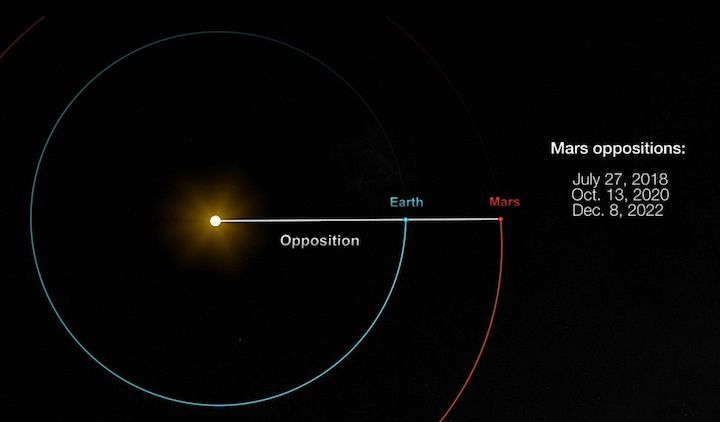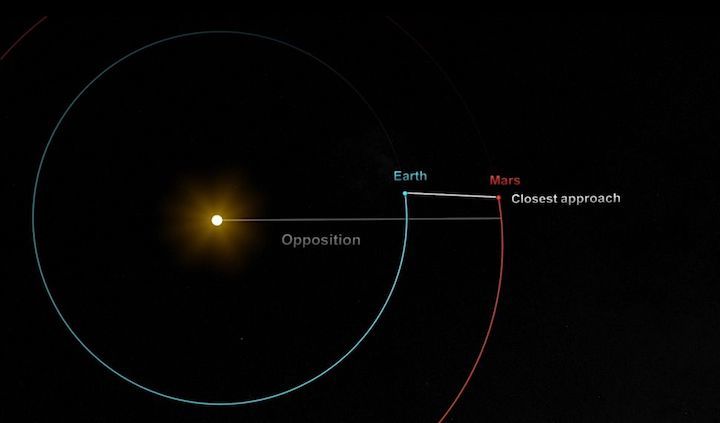8.10.2020
Look up and marvel at the Red Planet!
Look up! Mars is at its closest to Earth until 2035 today (Oct. 6), making it a oerfect time to see the Red Planet with your own eyes.
Today at 10:18 a.m. EDT (1418 GMT), Mars swoops within 38,568,816 miles (62,070,493 kilometers) of Earth, making a smooth close approach. This will be the closest the Red Planet will come to Earth for the next15 years, or until September, 2035, according to Earthsky.org.
The planet is visible high in the eastern sky. It appears as a stunning reddish light, weather permitting.
"October is a great time for viewing Mars, as the planet is visible all night right now, and reaches its highest point in the sky around midnight," NASA wrote in a skywatching guide.
Earth and Mars travel around the sun in elliptical orbits, orbiting in the same direction but at different speeds and at different distances from our star. Every 780 days, or about every two years, Mars and Earth line up and are the closest to each other during this time period. Today, the pair of planets will make this close approach.
This close approach comes shortly before Mars' opposition, which is when Earth comes between the sun and Mars and they all line up, on Oct. 13. Now, it might seem as though the closest approach should be when the planets are lined up in opposition, but it is not because they have elliptical orbits.
"If both the Earth and Mars circled the sun in perfect circles, and on the same exact plane, the distance between Earth and Mars would always be least on the day of Mars' opposition. But we don't live in such a symmetrical universe," according to Earthsky.org.
The last close approach between the planets in 2018 was even closer than this one, but in 2003, the pair made a historic approach. In 2003, Mars came closer to Earth than it had in about 60,000 years, 34.65 million miles (55.76 million km), according to Earthsky.org. The Red Planet won't come closer than this until Aug. 28, 2287 when it will be 34.60 million miles (55.69 million km) from Earth, according to Earthsky.org.


While skywatching hoaxes continue to live on on the internet, do note that, while Mars will be especially close today, it will not be as big (or even "nearly as big") as the moon in the sky. While Mars will shine extra bright this October, its close approach isn't even remotely close enough to appear as large as the moon. In fact, there is never an occasion where Mars looks as big as the moon in the sky.
While you're looking up at the sky to spot Mars, keep your eyes peeled for satellites as this week is World Space Week, which this year celebrates satellite technology. You can find out how to spot satellites via the World Space Week website here.
Quelle: SC
